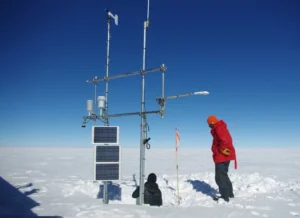
# Slope Stability Analysis in Geotechnical Engineering
Slope stability analysis is a critical aspect of geotechnical engineering, focusing on the assessment of the stability of natural and man-made slopes. The primary goal is to prevent slope failures, which can lead to catastrophic consequences such as landslides, property damage, and loss of life. This article delves into the fundamental concepts, methods, and importance of slope stability analysis.
## Understanding Slope Stability
Slope stability refers to the ability of a slope to resist failure under the influence of gravity and other external forces. The stability of a slope is influenced by various factors, including soil properties, slope geometry, groundwater conditions, and external loads. Engineers must carefully analyze these factors to ensure the safety and longevity of slopes.
### Key Factors Affecting Slope Stability
Several key factors play a crucial role in determining the stability of a slope:
– **Soil Properties:** The type and characteristics of the soil, such as cohesion, friction angle, and density, significantly impact slope stability.
– **Slope Geometry:** The height, angle, and shape of the slope are critical parameters in stability analysis.
– **Groundwater Conditions:** The presence and movement of groundwater can reduce soil strength and increase the risk of slope failure.
– **External Loads:** Additional loads from structures, vehicles, or natural events like earthquakes can affect slope stability.
## Methods of Slope Stability Analysis
There are several methods used to analyze slope stability, each with its own advantages and limitations. The choice of method depends on the specific conditions and requirements of the project.
### Limit Equilibrium Methods
Limit equilibrium methods are the most commonly used techniques for slope stability analysis. These methods involve calculating the forces acting on a potential failure surface and comparing them to the resisting forces. The factor of safety (FoS) is a key parameter derived from these calculations, indicating the stability of the slope.
### Finite Element Analysis
Finite element analysis (FEA) is a more advanced method that uses numerical techniques to model the behavior of slopes under various conditions. FEA provides detailed insights into stress distribution, deformation, and potential failure mechanisms, making it a valuable tool for complex slope stability problems.
### Probabilistic Analysis
Probabilistic analysis incorporates uncertainties in soil properties and other variables to assess the likelihood of slope failure. This method provides a more comprehensive understanding of risk and helps engineers make informed decisions.
## Importance of Slope Stability Analysis
Slope stability analysis is essential for ensuring the safety and stability of slopes in various engineering projects, including:
– **Civil Engineering:** Designing stable slopes for highways, railways, and urban development.
– **Mining:** Ensuring the stability of open-pit mines and waste dumps.
– **Environmental Engineering:** Managing natural slopes to prevent landslides and protect ecosystems.
By conducting thorough slope stability analysis, engineers can identify potential risks, implement appropriate mitigation measures, and ensure the long-term stability of slopes.
## Conclusion
Slope stability analysis is a vital component of geotechnical engineering, providing the necessary insights to prevent slope failures and ensure the safety of infrastructure and the environment. By understanding the key factors and employing appropriate analysis methods, engineers can effectively manage slope stability and mitigate potential risks.
Keyword: Slope

